
Fosbury Flopped To High Jump Glory
It was initially called a flop, but in reality, Dick Fosbury had a huge hit.
The Oregon State high jumper became a star in 1968, riding his revolutionary style all the way to an Olympic gold medal and being recognized as one of the world’s best-known athletes.
The sensation was a new style of clearing the high jump bar that he developed in 1963 as a high school sophomore. Instead of using a straddle or roll technique, Fosbury went over the bar backwards. In 1964 his hometown newspaper, the Medford (Oregon) Mail Tribune, captioned a photo of him as “Fosbury Flops Over the Bar” and a story described his technique as like “a fish flopping into a boat.”
The radical style wasn’t an immediate success with everyone. Fosbury’s coach at Oregon State – USTFCCCA Hall of Famer Berny Wagner – had him working on a conventional method in practice, while allowing the flop in freshman meets. That changed in Fosbury’s sophomore year of 1967 when he opened up by clearing a school record 6-10 (2.08m).
“After the meet, Berny came up to me and said, ‘That’s enough,’” Fosbury recalled to Brad Fuqua of the Corvallis (Oregon) Gazette-Times in 2014. “That was the end of Plan A, on to Plan B.”
But it was in 1968 that Fosbury started to soar, both literally and in popularity. He was on the cover of Track & Field News in February when he first cleared 7-0 (2.13m) and in March, he won the NCAA Indoor title, tying the meet record of 7-0. In June, Fosbury won the NCAA Outdoor with a meet record 7-2¼ (2.19m), improving the previous meet record of 7-2 (2.18m) set by Boston U’s John Thomas in 1961.
Then came Mexico City and true world debut of the Fosbury Flop. The crowd of 80,000 was captivated, loudly cheering Fosbury’s clearances. “Only a triple somersault off a flying trapeze with no net below could be more thrilling,” one German reporter told Jon Hendershott of Track & Field News.
Fosbury, who had raised his PR to 7-3 (2.21m) at the Final Olympic Trials, had first-attempt clearances through a PR 2.22m (7-3¼), his third Olympic record height. He and fellow American Ed Caruthers – 1967 NCAA runner-up for Arizona – were the only ones left as the bar went to 2.24m (7-4¼) and the marathon runners were entering the stadium for their finish.
Only Fosbury was able to clear it – surpassing the American record of 2.23m (7-3¾) set in 1960 by Thomas. Fellow Oregonian Kenny Moore had just entered the stadium as the first American marathoner and “threw his arms in the air, danced a jig step and shouted congratulations to Dick. The crowd roared with delight at the antics of the two young Americans,” wrote Hendershott.
Fosbury, who missed three attempts at a world record 2.29m (7-6), would never jump as high again. He repeated as NCAA champ in 1969, raising the meet record to 7-2½ (2.20m).
Today it is estimated that 99% of high jumpers worldwide use the flop style.
The NCAA and collegiate track & field will mark a momentous milestone in the spring of 2021 -- the 100th anniversary of the NCAA Championships and with that, the NCAA Track & Field Championships. In June 1921, the University of Chicago hosted the first track & field championships in NCAA history.
This point can’t be emphasized enough: Not only was the event the first for NCAA track & field, but the first championships for any sport under the sponsorship of the NCAA.
To celebrate, over each of the next 365 days, the U.S. Track & Field and Cross Country Coaches Association (USTFCCCA) will celebrate moments, student-athletes, and coaches that have made a century’s worth of championships special. From humble beginnings to important historical milestones to the modern-day, collegiate track & field has evolved with the American society.
The 2021 edition of the NCAA Division I Outdoor Track & Field Championships begin with preliminary round action on May 27-29 in Jacksonville, Fla., and College Station, Texas. The championships final site and culmination of the celebration is slated for June 9-12, 2021 at the newly rebuilt Hayward Field in Eugene, Ore.
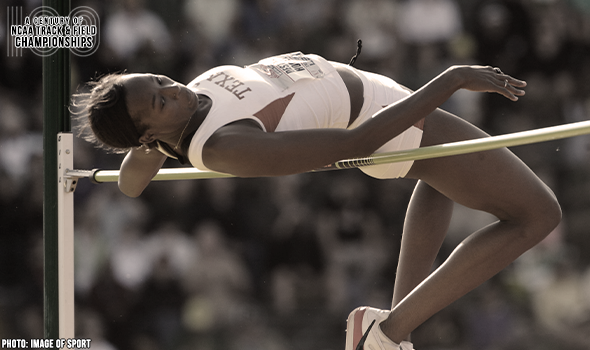
Texas’ Hooker High Jumped To NCAA Glory
Destinee Hooker won three career high jump titles at the NCAA DI Outdoor T&F Championships, including a massive victory in 2009 by more than two inches.
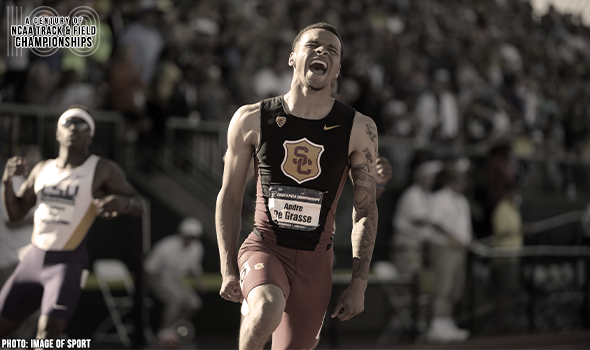
De Grasse Sprinted To Otherworldly Double
Andre De Grasse completed the 100-200 double at the 2015 NCAA DI Outdoor T&F Championships with scorching times: 9.75 (+2.7) in the 100; 19.58 (+2.4) in the 200.
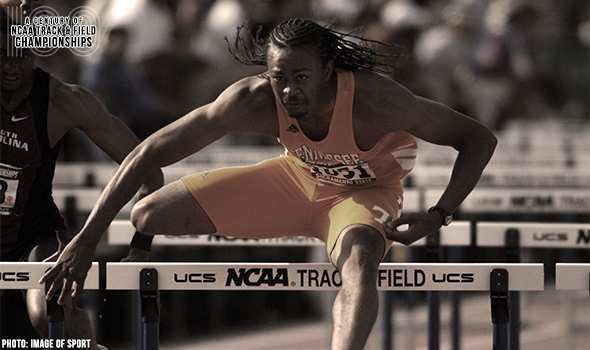
Merritt Broke Long-Standing 110H MR In 2006
Aries Merritt broke a 28-year-old meet record in the 110H when he won the crown at the 2006 NCAA DI Outdoor T&F Championships in 13.21.
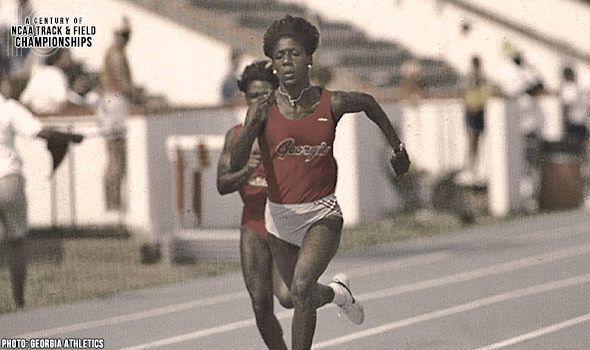
UGA’s Torrence Made NCAA History With Double
Gwen Torrence completed the 100-200 double at the 1987 NCAA DI Outdoor T&F Championships. Torrence was also the first woman to finish top-8 four times in the 100.
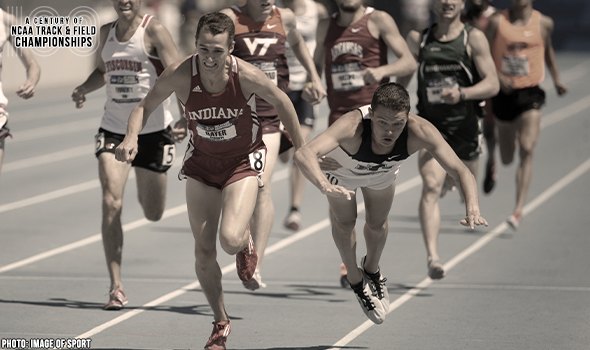
Bayer Gave It His All For NCAA 1500 Title
Andrew Bayer won the 1500 at the 2012 NCAA DI Outdoor Track & Field Championships in one of the closest finishes in meet history – 0.01 seconds.

Tipton Led 1-2-3 Oregon Finish In 1964 JT
Les Tipton led the first podium sweep of any event in the history of the NCAA Outdoor T&F Championships. Tipton and his Oregon teammates went 1-2-3 in the 1964 javelin.

K-State’s Jones Captured Heptathlon Crown In 2015
Akela Jones won the heptathlon at the 2015 NCAA DI Outdoor T&F Championships with 6371 points. That is the fourth-best score in both collegiate history & meet history.

Same Athletes, Same Result For LSU At NCAAs
The LSU foursome of Bennie Brazell, Pete Coley, Robert Parham, Kelly Willie swept the 4×100 & 4×400 crowns at the 2003 NCAA DI Outdoor T&F Championships.

Martin Won Distance Titles For Two Programs
Francis (Frank) Martin made history twice in the NCAA Outdoor Track & Field Championships.

FSU’s Williams Soared To Jumps Double In 2009
Kim Williams swept the horizontal jumps at the 2009 NCAA DI Outdoor T&F Championships. Williams was particularly dominant in the TJ, winning at 14.38m (47-2¼) & by nearly 2 feet.

